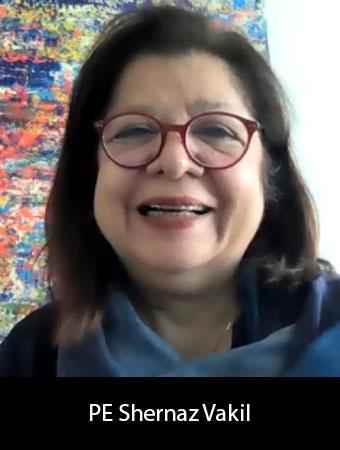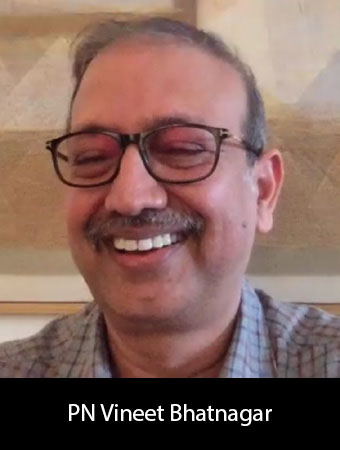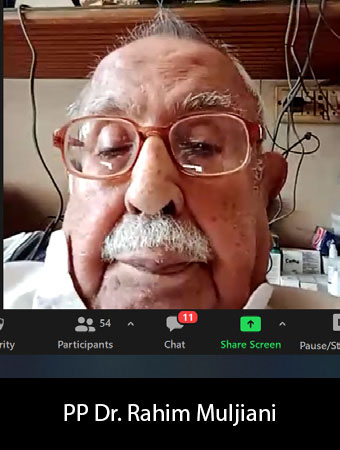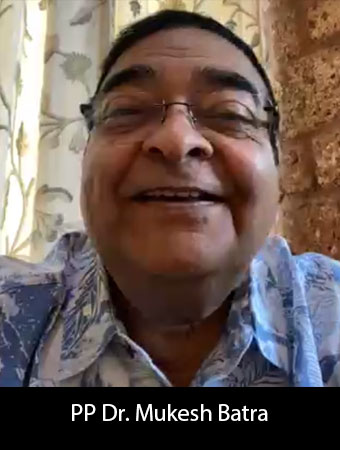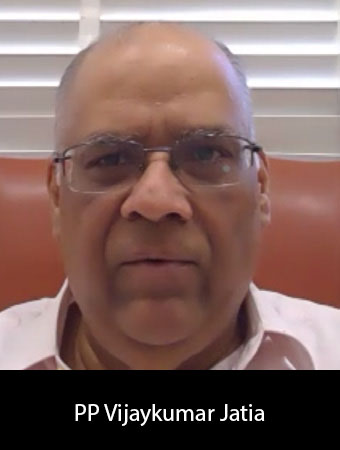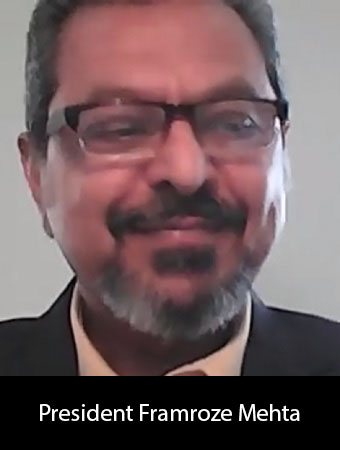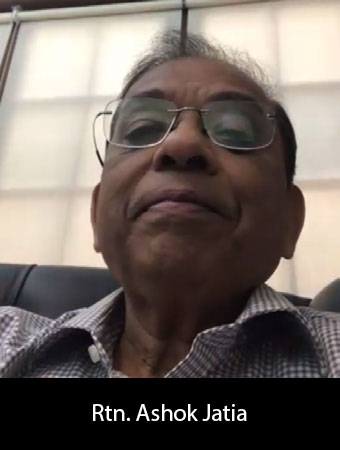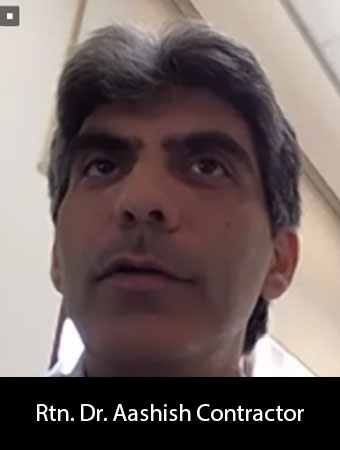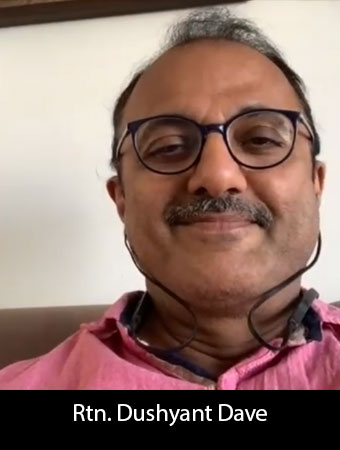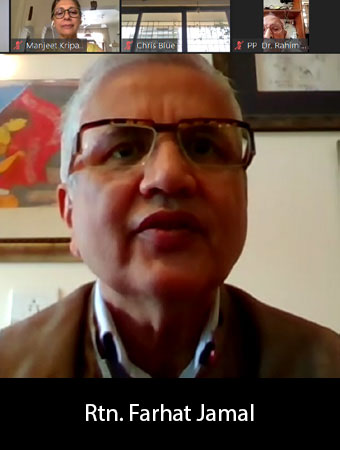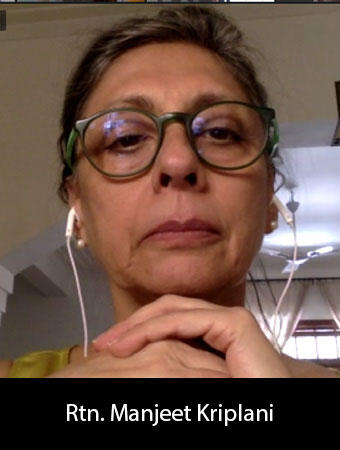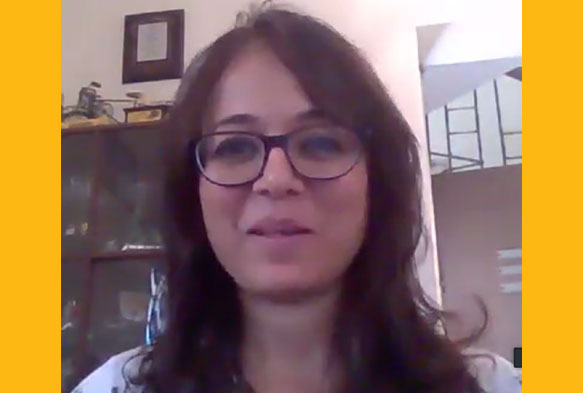
Mumbai’s Bicycle Mayor Firoza Suresh Wants Mumbai To Become The Bicycle Capital Of India
I STARTED CYCLING WHEN I WAS VERY YOUNG. KIDS THESE DAYS ARE BLESSED BECAUSE PARENTS GIVE THEM BICYCLES AND ALL THE SPECIAL GADGETS OF THE DIGITAL WORLD. IN OUR TIMES, WE WENT TO NEIGHBOURHOOD CYCLE RENTAL SHOPS WITH 50 PAISE IN OUR HAND. WE WOULD CHOOSE A CYCLE AND COME TO THE PUMP. THERE WOULD BE FIVE KIDS WAITING FOR ONE BICYCLE WHICH YOU COULD USE FOR HALF AN HOUR. THOSE WERE THE DAYS. MOST OF THE TIMES WE WERE OUTDOORS BASKING IN THE SUN, PARENTS DID NOT CALL US BACK HOME, AND WE ENJOYED OUTDOOR ACTIVITY. THAT IS HOW I WAS BORN AND BROUGHT UP.
For me, cycling was more of a very purposeful vehicle, geared towards commuting. As a teenager it became important to save my pocket money. So I used my bicycle to commute purposefully between my tuitions, which were in three batches as I was in the 12th std. Point A to point B, I really didn’t know what I was doing for the environment, I just knew that I was saving money for myself and my family. That was my journey during college.
I am born and brought up in Mulund. The journey from Mulund ki Cyclewali to Bicycle Mayor of Mumbai has been interesting. I got back into cycling in 2009 and things have changed. When you are young you see beauty in a cycle in its colour but 2009 was different because international cycle companies had come in and there were aerodynamics and geometry and you had to have a cycle with your perfect frame size and height. So, things have changed but it was good because I invested in an expensive bicycle.
Normally, women invest in gold and diamonds, for me investment was when I purchased a very good cycle. In 2012 I had a job at Dadar, Portuguese Church and I had one bicycle. Instead of using the public transport, which I am a fan of, I thought I would cycle the 12 km route. I guess that was the beginning: media started writing about us – people who cycle to work. I came across enough CEOs and CFOs who cycle to work and I thought it was interesting to dwell
upon because late in the ’60s and ’70s, Mumbai’s mill workers cycled to work too. So, this had already been happening but with the advent of other two-wheelers and motors, cycling began to be seen as a poor man’s vehicle.
I don’t know how this conversation shifted from cycling being the best transport to being a poor man’s vehicle but there was a shift in urban cities and urban India. Pune, earlier, was a cycling Mecca. When I started promoting cycling to work in 2012, it was unheard of. That was the first intervention I started for Mumbai with banners at Bandra Railway Station. We did a fancy bicycle flash mob for Mumbai city, we did the dabbawalla ride because they are the ones who have been cycling length and breadth of Mumbai like invisible cyclists.
2014 was the first time we did the Cycle to Work event. This entire journey has been organic. There was no thought-out plan. I am not an architect or an urban planner or transport planner to understand how the city needs to evolve with all the cycling belt. These are all languages that I finally got when I was dwelt upon this subject.
When we did the first Cycle to Work event for India, in Mumbai city, Sofitel – Accor group was very kind to us and hosted the event. We made it a little difficult, we did it on a Friday morning. We didn’t want to do it on a Sunday morning because then it would look like a cycle-thon thing. So, that is how it went on, we met like-minded people, think tanks and relevant people and then went on to relevant forums. For me, 2014 is when the feeling ignited in me to make Mumbai a cycling zone. In 2017, I was invited to Amsterdam as a speaker at a very prestigious, annual conference called the Velocity Conference, which takes place under the European Cycling Federation.
When I went to Amsterdam, I thought it was a wonderful city. I thought that I was born in the wrong city – Amsterdam was the perfect city for me to travel, there were cycling tracks, there were stands, everything was perfect. Then, when I spoke to my son, I said, ‘I think Mamma is born in the wrong city!’ He was very young, and he said, ‘no Mamma, you will bring about the change for Mumbai city and you need to work towards it’. I haven’t looked back since.
I quit my corporate job and started my own foundation called the Smart Commute Foundation and since then, we have worked to make Mumbai more cycle-friendly. We have a lot of engagement, intervention and meetings with local authorities and the government to implement and have proper governance.
We are not talking about cycling across the length and breadth of the city, we are talking about cycling for short commutes. We are talking about last mile connectivity so you can take a cycle to the nearest railway station or metro. That is what we are talking about. I was appointed bicycle mayor in 2019 for all the work I had done and got endorsed by the ex- Municipal Commissioner Ajoy Mehta and current Metropolitan Commissioner, R.A. Rajeev.
The entire leadership programme of the Bicycle Mayor is led by a Dutch NGO called BYCS. They have a mandate which is 50:30, which means the goal is for 50 per cent of commutes to be on bicycle by 2030. That is the mandate for all Bicycle Mayors across the globe. In India, there are 43 Bicycle Mayors. Each city has a different Bicycle Mayor. I am the first for Mumbai, my tenure is for four years – and I completed two years last January. We started a campaign called Cycle Chala Seeti Bajaa because it can’t be just pedal karo.
If we talk about transport solutions and how to integrate smart commutes in Mumbai, it is simple. We have the software, the hardware and the organisation and governance. Software is typically engagements like Rotary, understanding the programme, building up a culture, having events – everything is part of that software.
Hardware means needing infrastructure, good roads, no potholes, cycle stands, cycle tracks, and traffic lights that are more cycle friendly. Most importantly, road safety because we reach out to kids, women and corporates. So the first point that comes up is road safety and whenever we meet the HR or CSR there is always talk about road safety. When we talk about fatalities in Mumbai traffic, most occur in a leisure place, not in a commute space because when you talk of peak traffic, it is close to 10-15 kms/hr. It doesn’t harm the cyclist because the traffic is cushioning for the cyclist when it is at a slow speed and policy intervention is very important because we do not have the budgets. We have a budget for road infrastructure, gardens, coastal roads, health care and all, but there is no budget for non-motorized transportation which means walking and cycling. It is for this that we are pushing current authorities. I recently met with Mrs Supriya Sule, Commissioner Iqbal Singh, Mayor of Mumbai – Kishori Pednekar – it was important because we are sharing the roads with motorized transportation and there is a long-term plan that needs to be looked at.
We all think someone else will take care of the problems but ultimately someone should come ahead and take the lead in transformation. There would be a designed solution as well. For example, Amsterdam pulled out a street/lane and said that this should only be a cycle or walking lane. I have been in conversations with Rtn. Manjeet Kripalani, she took me around Colaba and we will work towards a vision.
Coming to statistics, Mumbai will need to reduce air pollution by 44 per cent by 2030 to maintain the current level of death and disability. I have been working in this space since 2012 and the corona virus pandemic became a boon for cyclists. Lots of people purchased a bicycle because of lack of transportation, fitness became important, work from home became the new normal. As I speak, there is a huge shortage of bicycles across the globe. If we sustain this opportunity, I would say currently we would have roughly 5-6 lakh cyclists around the city and if we are not able to sustain them, it is a lost opportunity for us and for the city. Mumbai currently is at 97th position in world when it comes to using cycling in the city, and among the first are, of course, Copenhagen and Amsterdam.
So, we need a vision to make Mumbai the Bicycle Capital of India by 2030. There are 43 Bicycle Mayors across India and I am proud to say we take it very seriously. The journey to come to this vision has been organic. I still feel that we can push it to 2025 if we are able to do the steps that are required to build up to that kind of vision. We know the current infrastructure. There was a cycle track in BKC, I wouldn’t say that cycle tracks are failed projects, it is always the balance between the infrastructure and the programmes and the focus of ridership.
We just can’t focus on cycle tracks and ignore the ridership because anytime when you get a cycle track, you need to have a cyclist using that. It can’t happen only in the recreation or fitness space where cycling is done only in the morning and evening. Then the entire infrastructure is empty in the afternoon. So, I am not currently pushing towards infrastructure because I know it is a chicken and egg situation, we need to have balance between both.
Every city has a transport mode share, in India it is 51 per cent, in Mumbai it is 3 per cent in other cities could be more, the short commute or non-walk trips that is 2-3 km of commute using a shared car, auto etc. is 22 per cent and you can save a lot of emission if you switch to cycling. Cycles is a multi-dimensional vehicle. It can be used for recreational, commute, livelihood bicycles, people use it for multi-day touring, endurance, long distance and competition. So, it is all that comes in. I like commuting so, I can pick up my bicycle very purposefully to go from point A to Point B, I love to run my errands on bicycle. Eventually my journey has been really organic, so, I would like to know what would work for the city. The cycle to work that I started can be tough at times because of behavioural change problems, people are used to AC car, AC office and so, it is like picking that one thing that could get us closer to our vision.
We realised how half of the Indian population live in slums and they don’t complain. They don’t complain of the harsh humidity, sweating or infrastructure problems, cycle tracks, they just look at the electric pole or some kind of street furniture where they can park. So, that is a hard fact and then the other set of cyclists in Mumbai are the invisible ones, your Swiggy, Zomato walas, Dudhwala, Istriwala, Dabbawala, all of them and they are not bothered about pollution and all. They cycle because that is livelihood. So, that is our pledge to increase ridership by one lakh cyclists.
How? We are looking at major CSR and funding and if we really want to live in a pollution free environment. We need to spike our ridership by at least a lakh by 2023 and, selfishly, I will focus on the urban poor here because that is where you get the single fold of cycle to school, cycle to college, last mile connectivity, livelihood that is where the focus is to give the cycles to the urban poor to spike up ridership that is where you can build a cushion between motorized transportation people sharing on the road. You can build up pressure with the authorisation that now we will have to demand cycle tracks, cycle stands. So, this would be the focus and game changer for Mumbai.
As the Bicycle Mayor, we are the first city to appoint 24 Bicycle Councillors – one each for 24 wards. This is something we achieved during the pandemic. We announced the project on June 3rd which is World Bicycle Day and 150 people applied because we were very clear with the vision. We finally got them on board and Bombay Times covered our event. They look at the increased ridership and secondly liaising with the local authorities, meeting up with the councillors, MPs. Commissioners of the wards and getting basic minimum cycle stands. Currently we are focusing on a couple of wards for Mumbai city where the local authorities are putting up the infrastructure.
We have regular ward rides within the particular ward. It is like a cycling club, they take the cyclist to a short heritage tour withing their wards. This is something we have tied up with bicycle donation. We have a program called Me Cyclerider. 2018 when I was cycling in one part of an urban poor settlement and I saw these kids playing. I asked them would you want to come along to Juhu beach for cycling? And immediately they said Yes! It struck me they didn’t bother to ask their parents, they just wanted to come along. So, immediately I reached my cyclists and said we need to organise to bring these children to Juhu beach. The parents were a little hesitant initially but I guess, over a period of time, when we donated the bicycle to that particular area in K west ward, that is where the confidence built up and now, we have been nurturing corner of slums out there. We donated old and new bicycles; we made a prototype of bicycles which is zero maintenance. It has a solid tyre, doesn’t require air, even the brakes are drum-brakes because eventually the kids have to continue on the bicycle, they don’t need to come back to me and say there is a problem in the brakes, there is no air and all. I want them to continue.
We wanted to understand how does livelihood cycle in Mumbai city and we gave them a device, so, we gave it to the dabbawalas, Swiggy and Zomato walas, agarbatti wala, it was a legit commute trip so, on an average they do a 30-35 km trip. We got the trip length of that livelihood cyclist. Swiggy/ Zomato walas do about 6-7 km legit cycling in the city and that is why I come back to this that there is nothing like a behavioural change problem. We also donated electric bicycles. We reached out to Hero cycles and we gave out electric cycles to Swiggy and Zomato cyclist also to understand that if they had those, would they be able to do more deliveries than usual.
In the western suburbs, there is a 36 km cycle track which the MCGM has announced along a pipeline, this is a game changer. There are 41 exits to this particular run. Mr Devendra Fadnavis had already estimated Rs 300 crore for this project, but it is taking some time due to encroachments along the line. We are also looking at easy low hanging Bicycle Stands in the 24 wards, I have given work to my councillors that they have to give me photographs of 25 locations in their wards, multiplied by 24 which is 600. The entire project is going to Mrs Kishori Pednekar, the Mayor of Mumbai, by next week. I am hoping this goes through and we have told them to sustain the momentum.
We still need a comprehensive network plan, a citywide cycling network is crucial, it could be shared, below the Metro, all of that will be part of comprehensive Network Plan and this requires money. We need a resource, the willingness of people in doing this, we can start with two wards and scale it up eventually. We have tied up with a Netherlands based organisation called Move Mobility, they showed an interest in funding part of the comprehensive Network Plan. The other part has to come from CSR because that is how they want to match up the funding. If we reach to that, we will get at least one association for that.
Every time we reach to an authority, the question is how many cyclists are there in the city; we reach out to an international company called STRAVA for the data and they gave a data for Mumbai city but we need that app which can be as simple as an app where we understand the cyclists of Mumbai city, how much carbon emission we have saved, the pollution controlled, for all this it’s important to get that app in place.
We are looking forward to collaborating with many more organisations. In Mumbai, we compromise on everything: the potholes, the congestion, the city is not even well equipped for a disabled person to move around, hence it is important to have a comprehensive Network Plan!


